
Thanks to Doug Booher for help in identification.
I had been trudging along a white sand scrub trail here in Central Florida, and noticed a small mound close to the shade of two trees. Thinking that it was a possible nest for another Pheidole colony (I had been seeing quite a few Pheidole adrianoi during my walk) I left some cookie crumbs next to the mound.
An hour or so later, I returned to the bait and found ants had claimed it, and it was a larger species that was definitely not one I had seen before. Plus, there was one major among the smaller minors in the lot, which pointed to it being a Pheidole!
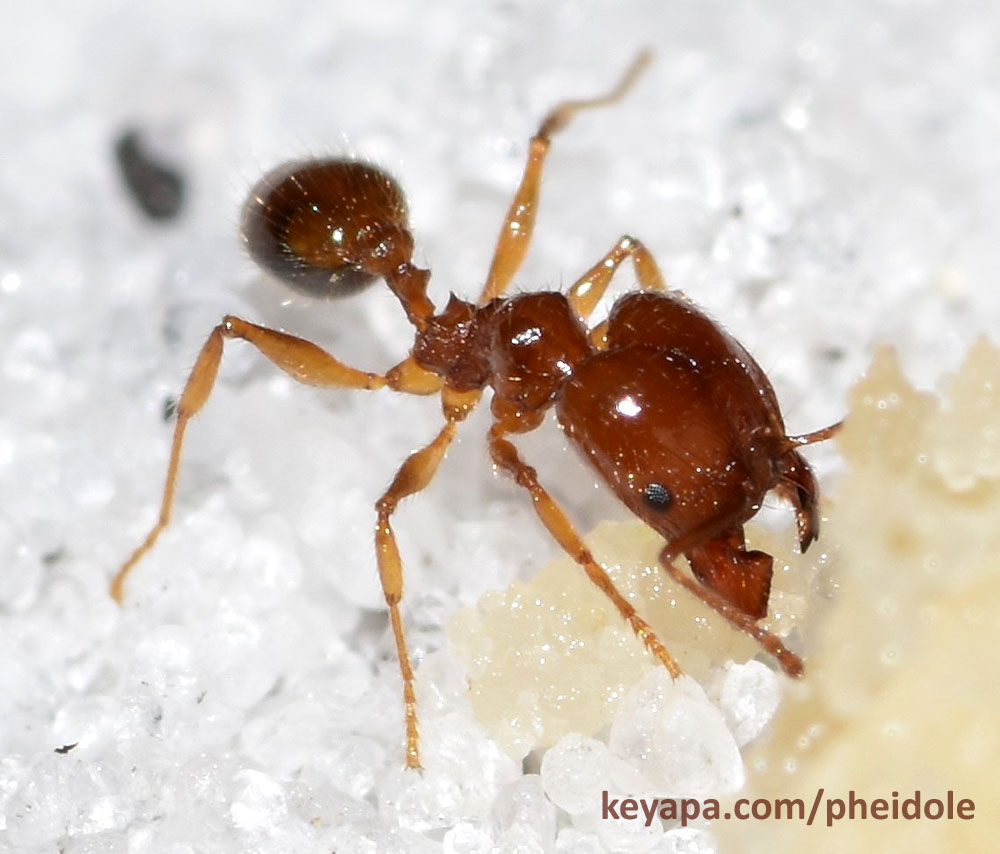
Unfortunately, I suddenly realized that there were two types of ants at the bait, and noticed at least one pair that was grappling in a tumbling ball as other ants gaster-flagged around them. It was Solenopsis fire ants, and before long the fire ants had cleared the area of the luckless Pheidole ants
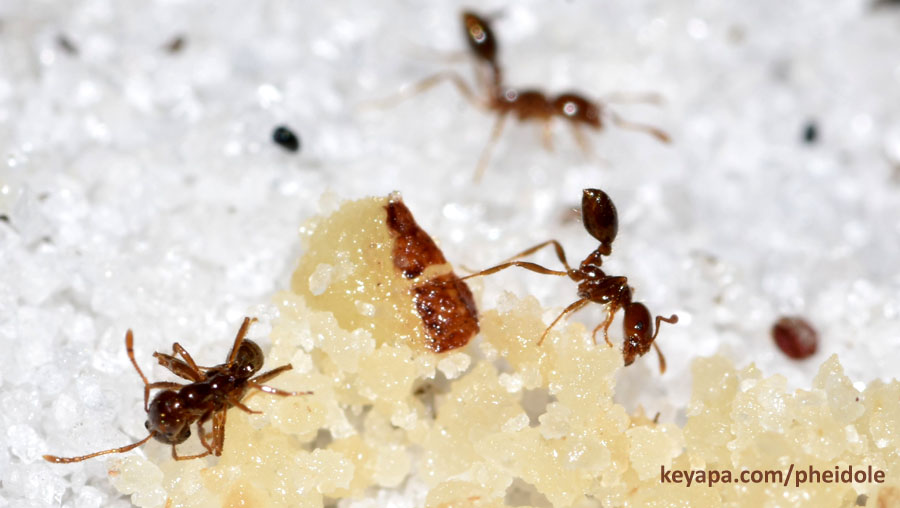
This episode reminded me why Pheidole dentata is famous in ant circles. It was using this species that Edward Wilson studied alarm recruitment and colony defense in ants, and how he elucidated enemy specification (Wilson, 1975 Wilson, 1976).
Solenopsis fire ants are one of the major competitors of P. dentata, and Wilson found that these ants have a complex strategy when it comes to defending against nearby fire ants. When minors meet single solitary fire ants, they lay down an alarm trail that summons major workers to the scene. The major workers are stimulated by the trail and by fire ant odors and perhaps venom from the incoming minor worker. These majors make short work of the intruding fire ants and patrol the area for a prolonged period of time and make sure no other invaders get close.
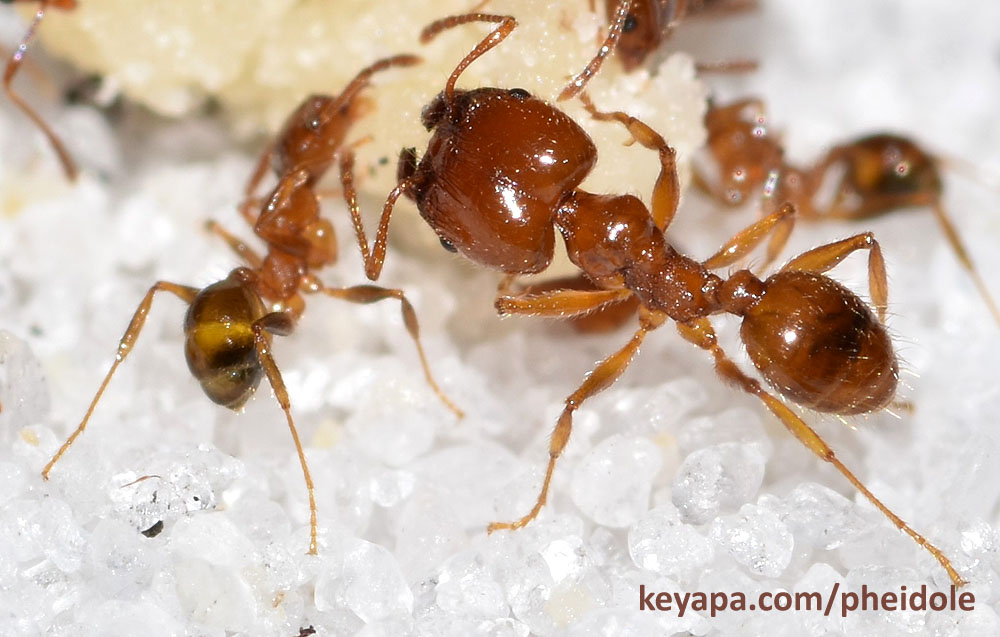
However, if the number of invaders is more than just a very few, the Pheidole minor workers lay fewer trails, and thus nest defense occurs closer to the nest where the massed solders try to stop the onrush. Finally, if there is an overwhelming number of fire ants, the entire nest absconds and escapes.
This series of events is only triggered by specific species (in this case fire ants), and are not induced by other ants or even by vertebrate stimuli. Such enemy specification is another feature in ants that was discovered in this notable species.
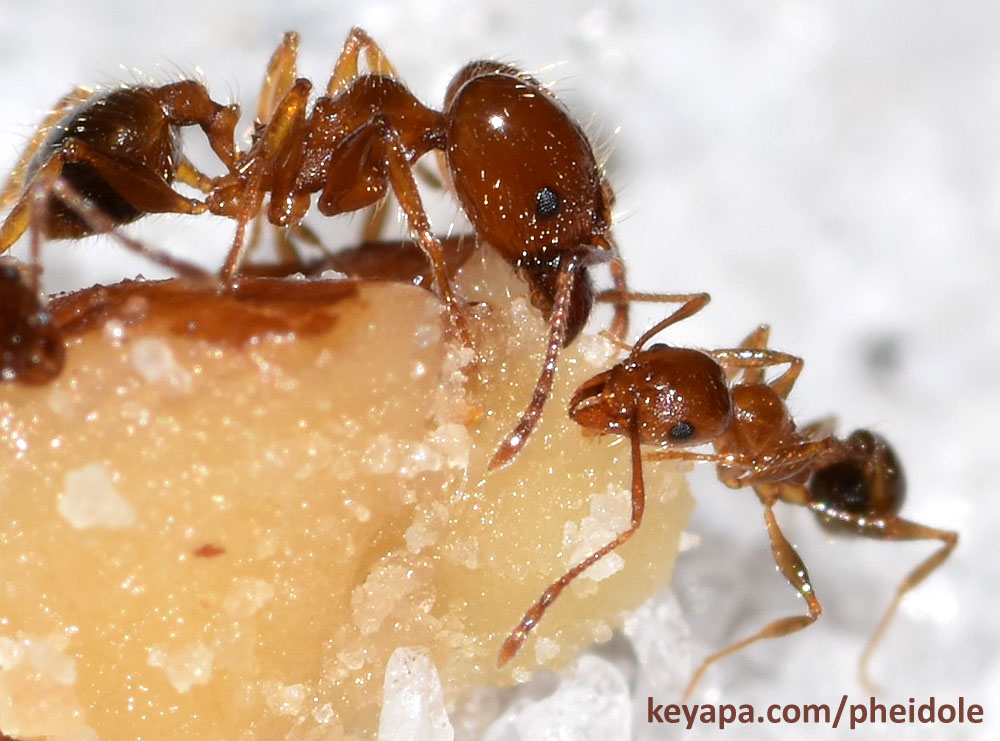
I found a nest entrance of this colony of Pheidole dentata hidden within leaf litter under the shade of two trees. From this redoubt foragers streamed out and mass recruited towards any bait, even if meters away.
I found the workers skittish and quite prone to scattering when disturbed, but P. dentata was quite efficient when it came to quickly summoning enough major and minor workers to secure the bait. Both minors and majors participated in patrolling and working on the cookie bits.
A final note about Pheidole dentata is that researchers recently discovered that individual ants do not seem to show age related problems as they grow older! This resistance to the ravages of time is quite rare in nature, and again shows how fascinating this species can be (Giraldi et al, 2016).
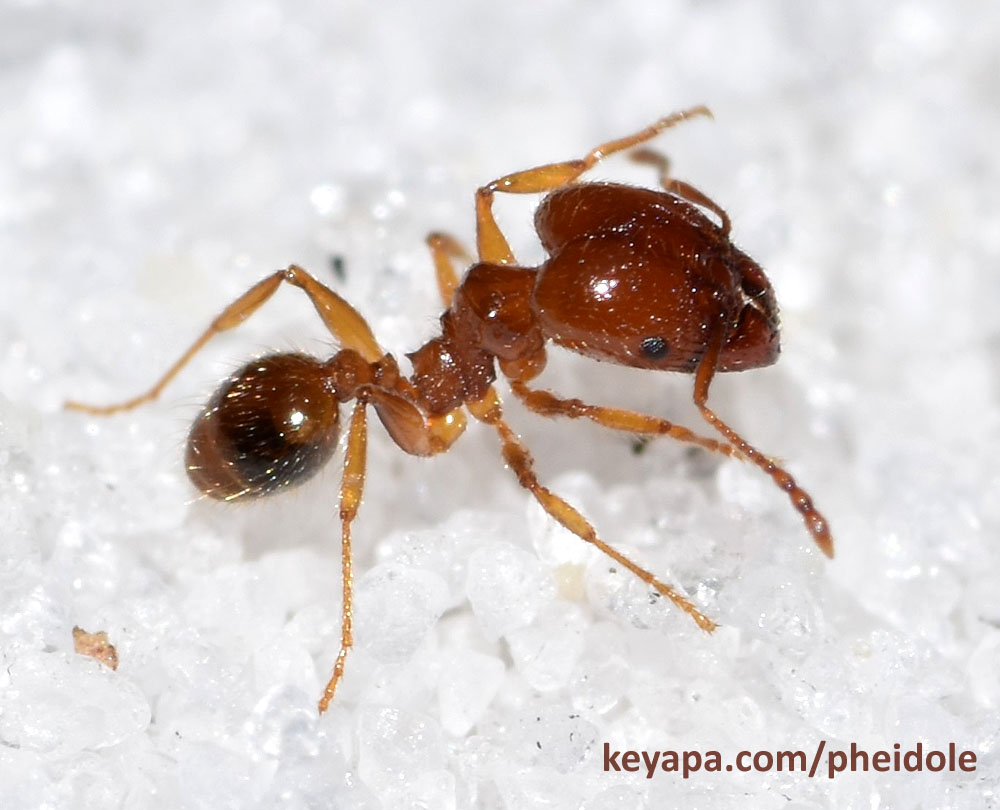
Literature Cited:
Giraldo Ysabel Milton, Kamhi J. Frances, Fourcassié Vincent, Moreau Mathieu, Robson Simon K. A., Rusakov Adina, Wimberly Lindsey, Diloreto Alexandria, Kordek Adrianna and Traniello James F. A. 2016Lifespan behavioural and neural resilience in a social insectProc. R. Soc. B.28320152603
Wilson EO. Enemy specification in the alarm-recruitment system of an ant. Science. 1975 Nov 21;190(4216):798-800. doi: 10.1126/science.1198097. PMID: 1198097.
Wilson, E.O. The organization of colony defense in the ant Pheidole dentata mayr (Hymenoptera: Formicidae). Behav Ecol Sociobiol 1, 63–81 (1976). https://doi.org/10.1007/BF00299953
Leave a Reply